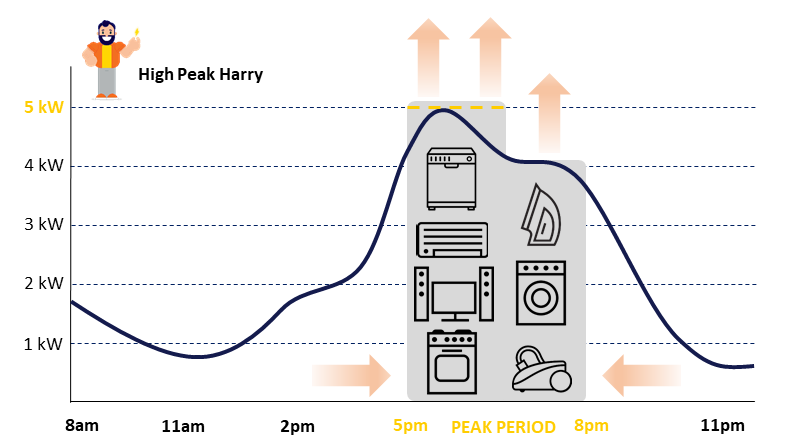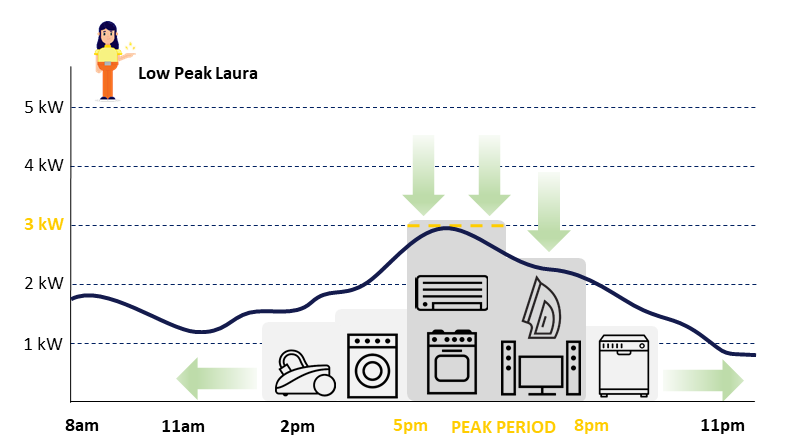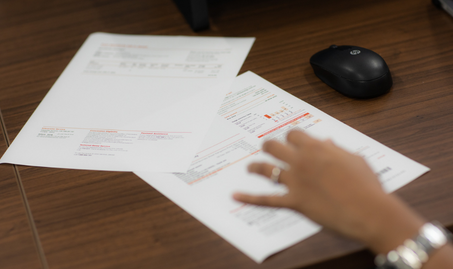SUSTAINABLE BUSINESS
Get the best value from your tariff
Demand-side management strategies for your business.
Saving on energy isn’t just about reducing the amount of energy you use altogether. Using power strategically can also lead to savings.
Managing how and when energy is used can go a long way towards negotiating a better energy contract and reducing your power bills. Once you understand your energy plan, you can determine what strategies you can take up to pay less for electricity.
Consider the timing of your activities
If your bill lists off-peak charges, this means you could save by doing some things outside of the peak period. Contact your electricity company to confirm if you pay different prices for using electricity according to the time of day (Time of Use tariff). Once you know when you pay more for electricity, you can decide how to reduce the amount of electricity you use at that time.


Example: If you have a solar system, do energy-intensive activities during daylight hours
If you have a solar system and are on a Time of Use (TOU) tariff but don’t have any battery storage, it makes sense to try and conduct energy-guzzling activities while the sun is shining. By rescheduling activities to times when onsite energy generation is high, or prices paid to your electricity company are low, you’ll maximise the value of your solar system and pay less for the electricity your business consumes from the grid.
You can monitor how much energy your solar system generates at specific times of day using a energy monitoring system, or the app provided by your solar system installer. Generally, in Brisbane a solar system generates more electricity during the middle of the day from 10am to 2pm.
To make the most of your solar energy, try to maximise activity during this time, and prepare for times when you need to work without sunlight. One idea is keeping some extra pre-prepared materials on hand to enable equipment to be switched off when your solar system isn’t generating energy (or when your electricity price is highest for TOU tariffs). For example, if you use a cardboard perforator to turn old cardboard into new packaging, like Perfect Potion, you could prepare a batch of these in advance, at a time when electricity prices are low or your solar system is producing energy from the sun.
For those who are unable to alter their operating activity, it may be worth considering installing a battery to store your solar energy. Solar system performance can decrease over time, leading to less energy production. Monitor the performance of your solar system, and schedule regular maintenance to get the most out of your investment. For more information visit: Maintain your solar system to optimise performance – Brisbane Sustainability Agency (sustainablebrisbane.com.au)
Example: Do energy-intensive activities outside your peak rate period
Many commercial kitchens and beauty salons do some laundry on-site. These businesses could reduce their energy bill by putting the laundry on outside of their peak period. If their electricity is more expensive in the evening between 4pm and 9pm (this varies by plan), they can save money by turning on the washing machine in the morning, at at another convenient time before this peak period. If this isn’t convenient, they could look into putting the load on a delayed start timer so that it runs during the night after 9pm.
Reducing your usage at peak times through strategies such as these can allow you to get the best value out of your retail electricity tariff and stay within the limit of your contract’s usage cap, if you have one.
Spread the activity evenly to avoid raising your demand charges
If your business is on a demand tariff, avoiding large spikes in usage can help reduce the extra demand charges paid by your business.
‘Peak demand’ refers to the point in time when energy usage is at its highest. This is typically the time of day when your business is most active. While it isn’t always possible to alter your core business activity to reduce energy use, you may be able to identify areas where you can make some changes to save you money.
Here are a some strategies to reduce large spikes in your energy use:
- Stagger work hours/start times.
- Operate heavy equipment and factory equipment outside of office hours, during the evening and early morning.
- Switch things on at different times, not all at once. An easy way to achieve this is by adding timers to your equipment, air conditioning, or lighting.
- Choose energy efficient equipment specially designed to reduce spikes in energy use. Some types of equipment cause surges in energy when they are turned on, or during operation. There are more efficient models that keep these surges to a minimum, reducing spikes in energy use that can cause high demand charges.
- Use onsite energy generation systems, such as solar and batteries.
These are just some examples of many strategies that will get the best value for your plan type. If you would like to learn more about these strategies (also called demand-side management strategies), you can visit: Clean Energy Council’s Guide to improving electricity use in your business.
Source:
Where to next?

Energy monitoring systems
New software is providing small and medium businesses with new ways to access their energy use data to drive their decision-making.








